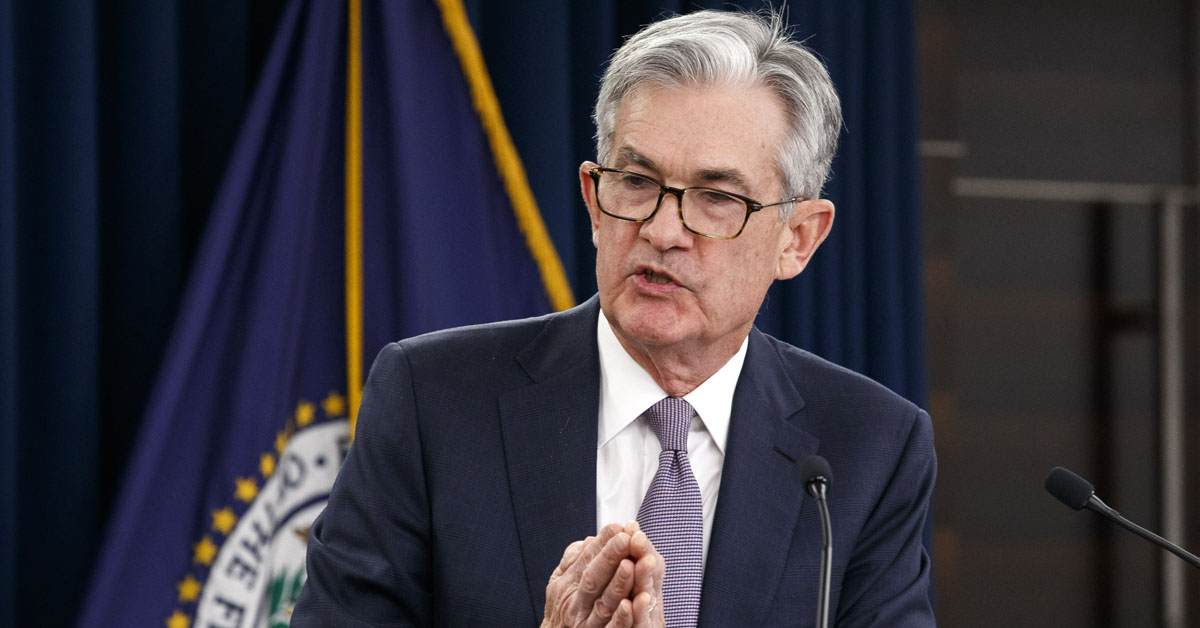Citing the continued economic stress caused by the coronavirus pandemic, the Federal Reserve not only left interest rates unchanged at 0 to 0.25% on Wednesday, but also signaled an intention to keep them as such for the next couple of years.
“We’re not thinking about raising rates,” said Fed Chairman Jerome Powell at a press conference after central bank’s Federal Open Market Committee (FOMC) meeting.
“We’re not even thinking about thinking about raising rates.”
The bold statement accompanied an FOMC release that proclaimed “the Committee expects to maintain [near-zero rates] until it is confident that the economy has weathered recent events and is on track to achieve its maximum employment and price stability goals.”
That timeframe could extend for quite some time. A dot plot graph from the Fed that summarized the 17 FOMC members’ sentiments on the rates showed that all of them favored keeping the federal funds rate between 0% and 0.25% through 2021. The same graph revealed that all but two FOMC members anticipate that keeping the rate at that level will be appropriate until 2022, with one targeting a range of 0.25% to 0.5%, and another favoring a level of 1% to 1.25%.
More of the Fed’s projections are likewise clear in predicting a long, gradual recovery. FOMC participants project a median real GDP loss of 6.5% in 2020, with the employment rate hovering above 9% by year’s end. And even toward the conclusion of 2022, the Fed still anticipates an unemployment rate of 5.5% — a stark contrast to the 3.5% February jobless rate that registered near a 50-year low.
“My assumption is that there will be a significant chunk [of permanent job losses], well into the millions,” said Powell. “I don’t want to give you a number, because it’s a guess. Well, well into the millions of people who don’t get to go back to their old job — and there may not a job for them for some time.”
Join 210,000 mortgage professionals
Get the news, trends and industry updates in your inbox to become a better mortgage originator. Subscribe to emails below.
Mike Fratantoni, senior vice president and chief economist at the Mortgage Bankers Association, said that the Fed’s policy suggests it is focused on the long term, despite early positive signs from the housing realm, stock market and job market.
“Today’s announcement from the Federal Reserve is aligned with this reading of the economy: we might be getting better — but we are still far away from full employment — with risks ahead from a second wave of the pandemic and huge economic uncertainties,” Fratantoni said. “Monetary policymakers will therefore keep rates low for years to ensure a full recovery.
The Fed’s widely expected commitment to stimulus measures showed a dedication to prop up the economy by any means necessary, said Jay H. Bryson, chief economist at Wells Fargo.
“The FOMC made no major policy changes today, but it left little doubt that it will do ‘whatever it takes’ to help the economy climb out of its pandemic-induced crater,” Bryson said.
Bryson did note that the Fed’s “whatever it takes” approach may not necessarily extend to more drastic measures like negative interest rates or explicit targets for long-term interest rates.
“If the economy is not ‘on track to achieve’ the FOMC’s ‘maximum employment and price stability goals,” then the committee will dig deeper into its tool kit to find ways to support economic activity,” Bryson said. “Although negative rates and yield curve control are in that tool kit, we believe the committee will opt to use other tools first.”
Additionally, Fratantoni noted that the Fed pledged to maintain its current pace of buying up Treasury and mortgage-backed securities, which should help the housing market remain liquid.
“In March, the Fed stepped in to purchase billions of MBS (mortgage-backed securities) and Treasuries, and has cumulatively purchased more than $2 trillion since then, including more than $700 billion of MBS,” said Fratantoni. “While these purchases have slowed, the Fed continues to signal that they stand ready to step back into the market, if necessary, to reduce volatility. … With mortgage rates near record-lows, this support has enabled a robust rebound in purchase market activity and a sustained refinance wave – which is saving homeowners money that can be used to support other spending, thereby benefitting the broader economy.”






